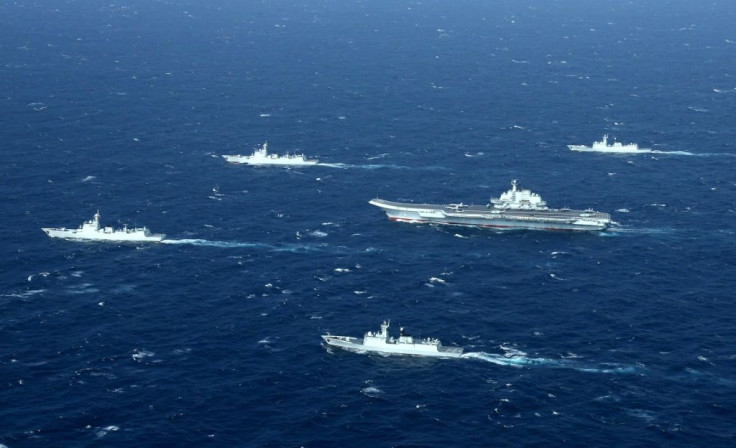'Only A Matter Of Time': Chinese Carrier Strike Groups Can Appear In Indian Ocean, Says Analyst
KEY POINTS
- Beijing needs to safeguard its growing interests in the Indian Ocean, says analyst
- International order will be "chaotic and multipolar" in the foreseeable future: Zhou Bo
- The Indo-Pacific strategy of the U.S. is aimed at containing China's growth
After the Taiwan Strait and beyond the South China Sea, Beijing may be now preparing for an increasing face-off with the U.S. in the Indian Ocean, and one senior Chinese analyst pointed to the inevitability of that happening.
"It is only a matter of time before a Chinese carrier strike group appears in the Indian Ocean," said Senior Colonel Zhou Bo, a former PLA officer and defense ministry official, and a senior fellow at Tsinghua University's Centre for International Security and Strategy.
Speaking at an online seminar organized by the King's College London and the Centre for Policy Research, an Indian think tank, late last month, Zhou said that with the U.S. aiming to contain Chinese influence, Beijing needs to safeguard its growing interests in the Indian Ocean.
The international order will be "chaotic and multipolar" in the foreseeable future, according to Zhou, which could lead to another Cold War. In Europe, there's a prevailing uncertainty due to the Russia-Ukraine war, while in Asia the U.S.'s Indo-Pacific strategy clearly aims to contain China.
Given the U.S. strategy, "China has no high hopes that China-US relations will improve drastically," the expert said.
"To safeguard China's growing interests in the Indian Ocean and maintain the security of strategic sea lanes, the Chinese navy must maintain or even strengthen its presence in the Indian Ocean," Bo pointed out.
Given the growing economic interest in the region, experts believe that the Indian Ocean could soon see the entry of a Chinese naval battle group led by an aircraft carrier with possibly a total of six to eight ships, including a submarine.
The assessment is that the battle group could transit the Malacca Straits, making ports visits in the Andaman Sea at Myanmar, in the Bay of Bengal at Bangladesh's Chittagong, and at Hambantota in Sri Lanka, before heading to ports at Gwadar or Karachi in Pakistan, Iran and probably even head towards the Chinese naval base in East Africa.
Meanwhile, for the U.S. which has a military base in Diego Garcia, the Indian Ocean has been a staging ground for its military operations in Afghanistan, Libya, and Iraq and a transit route for forces between Japan and the Middle East.
However, since the Cold War ended and with no geopolitical competition in the region, Washington grew comfortable with France, the U.K. and India taking over the role of key security providers in the Indian Ocean. India, meanwhile, increasingly considered the Indian Ocean region as its strategic and economic zone.
However, considering the U.S. has been driven by its own strategic goals, there's a lack of trust in New Delhi. Although the U.S. and India regularly conduct joint exercises; last year, the latter's security establishment went into a frenzy after USS John Paul Jones carried out a "freedom of navigation" exercise near India's Lakshadweep Islands, "without requesting India's prior consent."
Now with China having access to strategic ports in the region, Beijing will throw a direct challenge to the U.S. and Western allies, and also greatly impact New Delhi's security consideration making it imperative to counter growing Chinese influence.

© Copyright IBTimes 2025. All rights reserved.






















